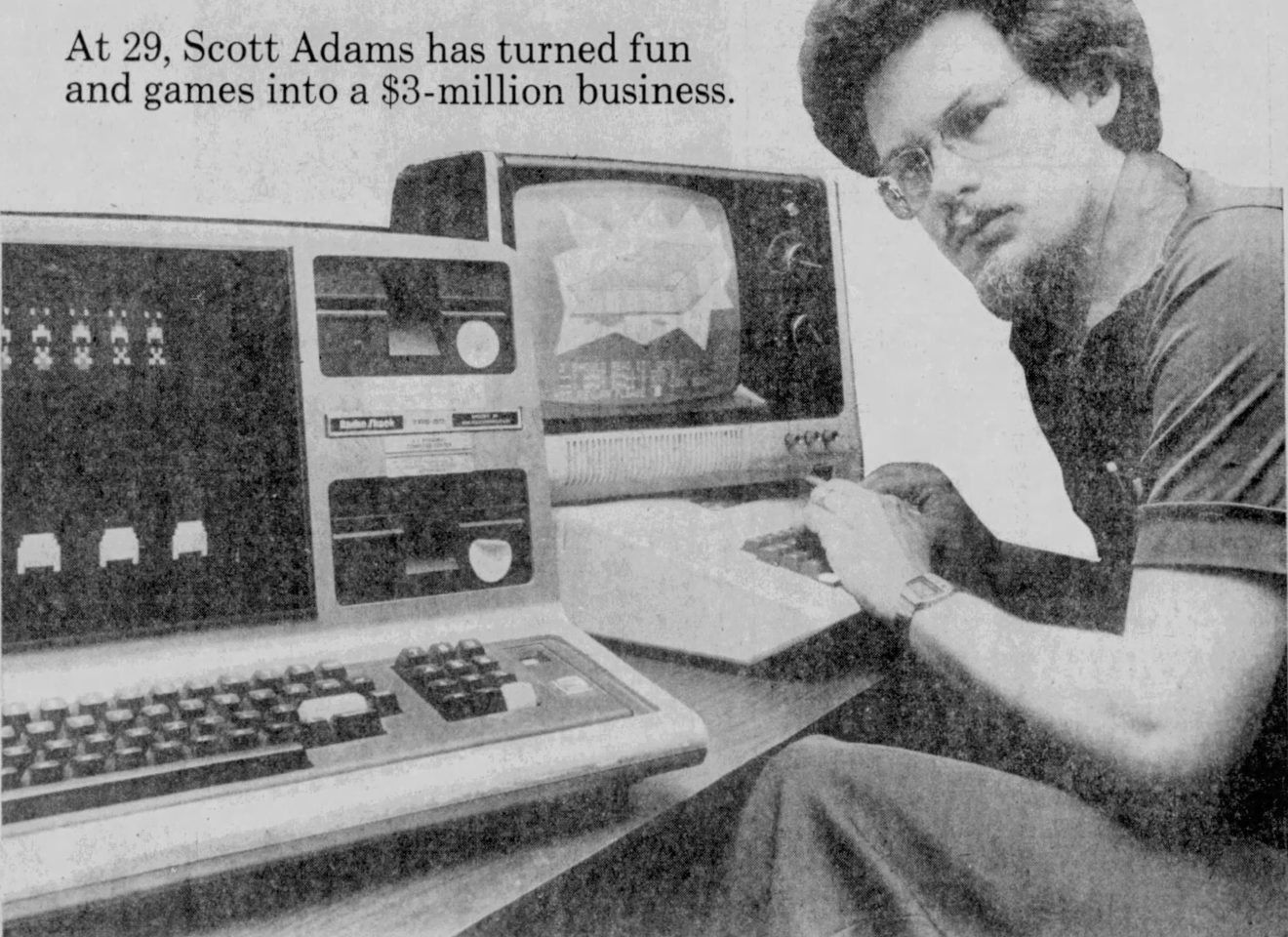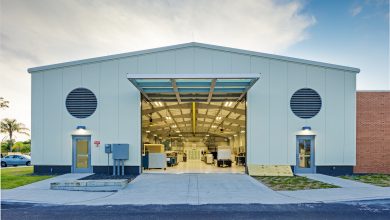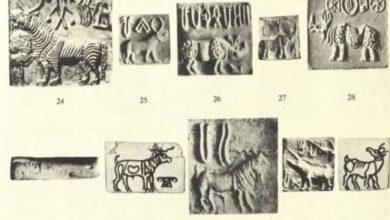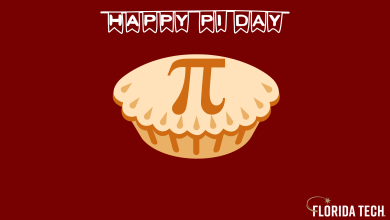Secret History: Creating the World’s First 16-Bit Home Computer and First Interactive Video Game
Dateline: 1970/1975/1978

Etymology: Adventure (n.) c. 1200, aventure, auenture “that which happens by chance, fortune, luck,” from Old French aventure (11c.) “chance, accident, occurrence, event, happening,” from Latin adventura (res) “(a thing) about to happen.”1
The Wheel of Fortune
Our lady of perpetual permutations, Dame Fortuna, must surely have smiled in 1970, when a North Miami High School senior named Scott Adams ’75 enrolled at Florida Tech. Adams’ younger brothers, Richard ’76 and Eric ’78, would follow. At the time, no one in sleepy Melbourne, Florida, could have foreseen that this trio of Florida Tech undergrads would work a digital revolution.
In 1974, Richard built the world’s first 16-bit personal computer. Eric programmed the machine. A year later, Scott authored the first graphic video game for a personal computer.
In 1978, Scott, widely regarded as the “father of the whole computer gaming industry,” launched Adventure International.2 Today, 2.5 billion people play video games on personal computers whose ancestry can be traced to the Adams brothers.3
The Adventure Begins
Chance plays a role in all lives. In 1969, a girl overheard Scott musing with friends about his future. He wanted to pursue a degree in computer science. Massachusetts Institute of Technology (M.I.T.) was a possibility, but Scott, who had grown up in South Florida, did not want to leave the Sunshine State.
It was at this point that the girl spoke up. She told Scott that a college with “a good reputation” was located in Melbourne. She thought its name was “F.I.T.” He should look into it.
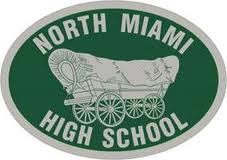
Scott did some research and liked what he saw. He learned that “Countdown College” had grown out of the Missile Test Project at Cape Canaveral, Florida. The first students were “missilemen” working at the Cape. It was a good match.
Indeed, the 17-year-old considered himself something of a “missileman.” When he was 14, as part of a science fair project, “he had accomplished what he believe[d] was [a] first in rocketry,” sending a hamster where no hamster had ever gone before.4
Rockets were cool, but Scott’s passion was computers. He had seen his first computer during a fourth-grade field trip to the University of Miami. During his senior year at North Miami High School, Scott’s digital relationship was consummated.
“I just fell in love with it,” he says.
An understanding teacher gave him access to the machine. Scott’s lifelong love affair with computers had begun.5
A Providential Opening
Scott settled into his dorm room at Florida Tech in mid-September 1970. Like many undergraduates, Scott qualified for the federal work-study program.
Work-study was established in 1964 as part of the Economic Opportunity Act and was later incorporated into the Higher Education Act of 1965. The program’s goal was to help students meet the costs of their education and provide experience in the students’ academic majors.
When Scott applied for a work-study job at the computer center, the financial affairs officer told him there were no openings, but there was a slot at the library.
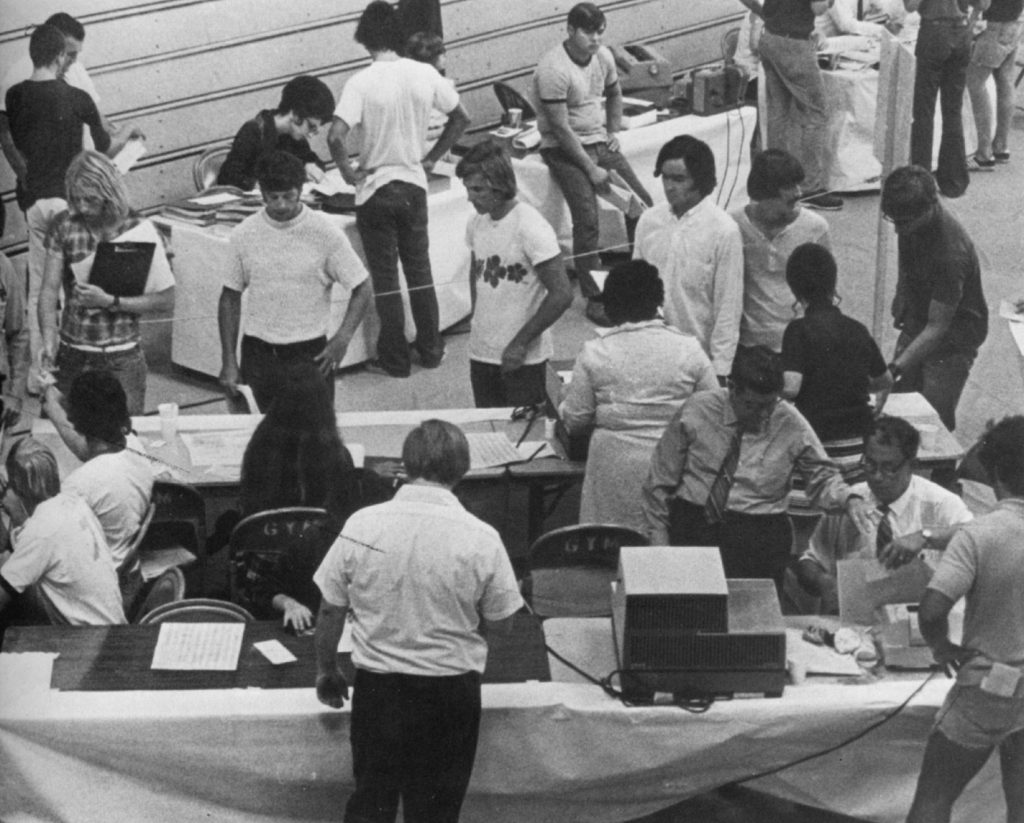
A disappointed Scott returned to his dorm room. His roommate was jubilant. He had wrangled a work-study slot at the center by writing ahead. Scott kicked himself. He should have done the same.
He asked if he might tag along the next time his roommate went to Grissom Hall. The computer center was located in the building’s basement. What harm could it do? He promised to leave if he got in the way. It would allow him to see the center’s IBM 1130 computer.
It was, Scott later recalled, “a providential opening.” He met Robert A. Brown, the center’s director, and his assistant, Reecie Renegar.
Scott told Brown and Renegar about his fascination with computers and teaching himself programming. Brown and Renegar were impressed with the freshman’s enthusiasm and offered him a job.
“We’ll try you out,” Scott remembers Brown saying, “and see what happens.”
It was the beginning of a beautiful relationship.6
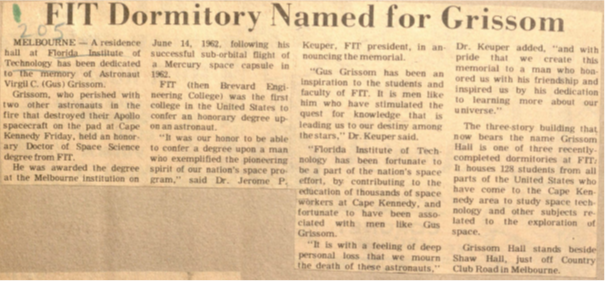
A Wideawake Sojourn
Scott’s first job at the computer center was putting mailing labels on Florida Tech’s alumni newsletter. Brown and Renegar knew talent when they saw it. Soon, they assigned Scott a host of programming and analyzing tasks. By 1973, he oversaw the university’s entire accounting system.5
The work at the computer center and the heavy class load took their toll. Adams confided to Renegar that he was exhausted. He needed a break.
Renegar, whom Scott described as “a mother … to the boys in the computer center,” had an idea. A few days earlier, she had seen an ad on Florida Tech’s student bulletin board with the headline “Ascension Island needs mathematics grads.” She suggested he apply.
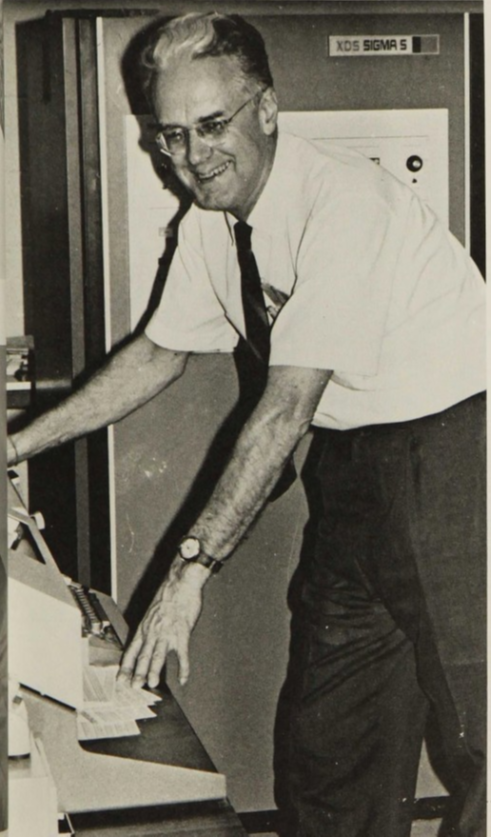
The hitch was that Scott had not graduated. Renegar told him not to worry. She would make some phone calls. She had contacts at RCA who were recruiting technicians for the program.
A few weeks later, Scott landed at Wideawake Airfield (aptly named after a nearby noisy colony of sooty terns) to begin an 18-month sabbatical on Ascension Island.6
The job on Ascension was not programming. In 1956, the U.S. Air Force had established a tracking station on the island. Five years later, the station’s mission expanded to include anti-ballistic missile tracking, as well as supporting NASA’s missions.
When Scott arrived at Wideawake, a single Air Force officer and his sergeant oversaw the cohort of civilian technicians in the Space-Object Identification (SOI) unit. SOI was charged with keeping track of radar signatures of satellites and space objects.7
Scott’s assignment was to record the signatures and send the data up range to the Space Defense Command (SDC).
There was a problem at the up-range defense command center. The tabulators could not keep up with the SOI’s data stream.
The digital logjam presented an opportunity. Scott persuaded his superiors to give him access to the unit’s Xerox Sigma 5 computer. He was well acquainted with the Sigma 5. Before leaving Melbourne, he had helped install a Sigma 5, the replacement for the outdated IBM 1130, in the computer center’s new home on the Crawford Science Tower’s first floor.
He wrote a program that dramatically sped up the processing time. He remembers that his superiors were “very, very happy” with his initiative. Henceforth, he had access to the Sigma 5.6
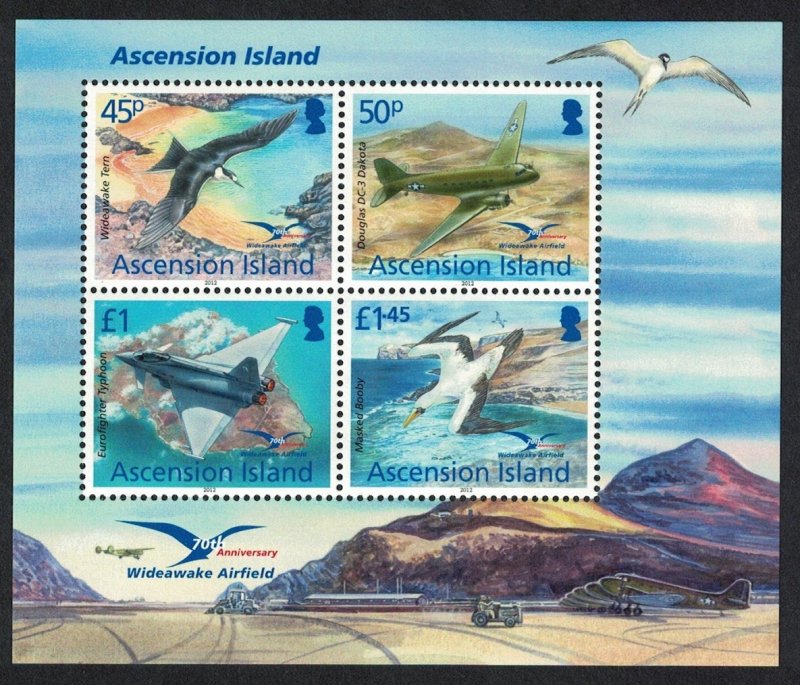
Making Music
There was not a lot to do on Ascension Island. The 34-square-mile volcanic island with its jagged lava fields had historically served as a graveyard for sailors who had died of yellow fever and as a home to prodigious numbers of green turtles.8
In 1836, near the end of his five-year odyssey, Darwin landed on Ascension.
“The Isd. [island],” he noted in his diary, “is entirely destitute of trees & in every other respect it is very far inferior to St. Helena. Mr. Dring tells me that the witty people of the latter place say: ‘We know we live on a rock, but the poor people on Ascension live on a cinder.’ The distinction is in truth very just.”9
Scott concurred, observing that on Ascension, “they have to import the natives.”10
For 18 months, when he was not tracking missiles and satellites, Scott played pool, reported for The Islander, Ascension’s newspaper, and served as DJ for a weekly Broadway hits tribute titled “This is My Song” on the island’s radio station.
Five thousand miles to the west, Scott’s brother Richard was at work on his own musical endeavors.
Richard had arrived in Melbourne in 1972. Eric followed two years later. The brothers shared a house in the Sherwood Forrest subdivision of Eau Gallie.
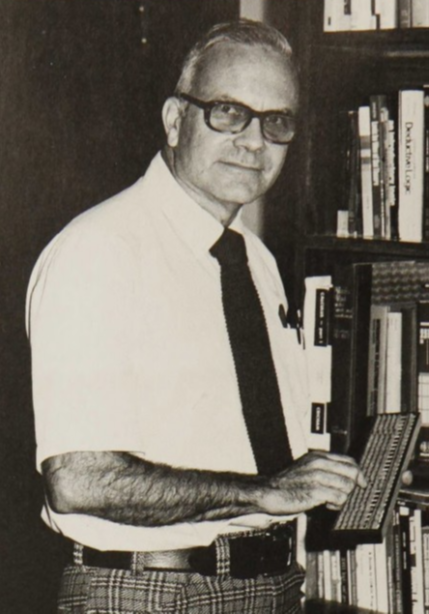
Richard’s foray into musical composition came to fruition in one of professor David Clutterham’s* math classes. As part of his coursework, the 19-year-old connected an electric organ and a pair of speakers he had found in a trash can to the university’s DDP-24 computer located in the Crawford Computer Lab.
“Most of the students have projects,” Clutterham observed, “but the use of a computer to play an organ is rather an unusual one.”
It took Richard three months to program the DDP-24 to play “a dashing rendition of ‘Waltzing Matilda.'”
While Scott was serenading the sooty terns, green turtles and SOI technicians with Broadway hits, Richard’s musical repertoire grew to include J.S. Bach’s “Toccato and Fugue” in D minor.11
The World’s First 16-Bit Personal Computer
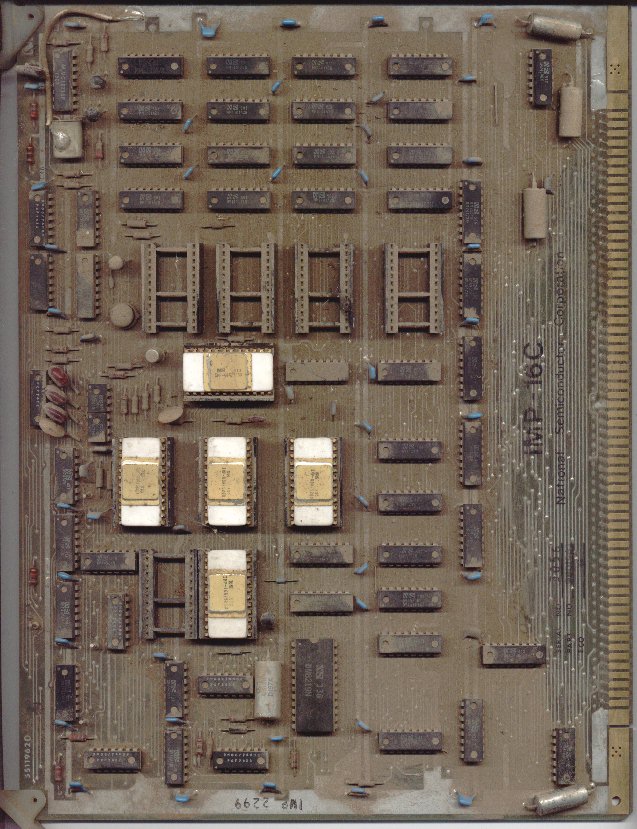
Richard found working with the DDP-24 exasperating. The DDP-24, which had been donated to Florida Tech from the mission control at the Cape, was not state of the art. It lacked offline storage. Moreover, the Crawford computer science lab’s card punch was frequently broken.
Richard’s frustrations led him to explore the possibility of building a computer.
In 1974, the choices were limited to eight-bit hobby kits based on the Intel 8008 processor. An eight-bit chip was insufficient to meet Richard’s needs. He bought a pair of circuit boards and a set of National Semiconductor IMP-16 chips from a surplus parts company.
Marketed in 1973, the IMP-16 was the first multichip 16-bit processor.12 Richard resurrected components from a discarded card reader and connected them to the IMP-16. He added a power supply and designed a control panel. Eric adapted a TV typewriter that served as an input to the central processing units and supplied the software to program the Adams IMP-16, the world’s first 16-bit personal computer.
The World’s First Graphic Game for a Personal Computer
In 1975, Scott returned to Melbourne to earn his degree in computer science. He finished his undergraduate degree nine months later.
His success on Ascension earned him a second posting to a tracking station on the island of Antigua. RCA was looking to expand its Caribbean operations. This time, Scott was hired as a programmer.
The challenge was that RCA’s Antigua Sigma 5 had less memory than the computer on Ascension. The technicians were forced to input data manually. The result was that RCA was behind schedule in meeting its obligations.
The contract was in question. Scott’s supervisors asked him if he could do anything. Once again, he wrote a program that reduced the amount of memory needed to compile the program. RCA management was thrilled and permitted him to use the mainframe in his free time.
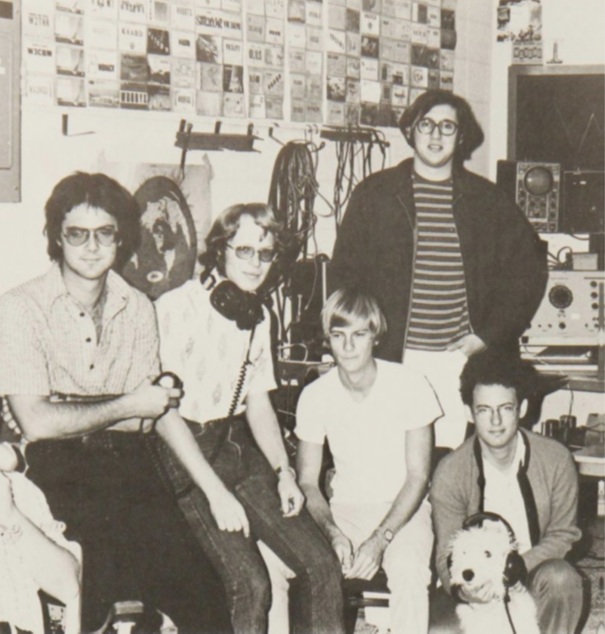
This was an opportunity not to be missed. Scott had always enjoyed playing games. There was a copy of a “Star Trek” program floating around on the mainframe. A teletype supplied the input and output. The teletype and the mainframe were in a room surrounded by radar screens.
During one gaming session, Scott had an epiphany as the teletype slowly printed out pages and pages of text: Why not use the radar screens to display the game? Overnight, Scott had turned a multimillion-dollar Sigma 5 into a video game computer.
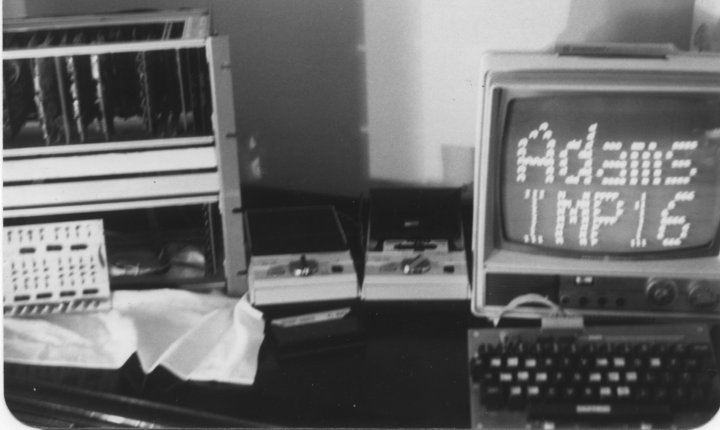
When Scott returned to Melbourne, he set to work writing a Space War game—his take on “Star Trek” for Richard’s Adams IMP-16 computer. He penciled the 1,000-byte Space War game onto 14 pages of notebook paper.
The game’s centerpiece was a battle between the Starship Enterprise and a cadre of Klingon vessels. The letter “E” was used for the Enterprise; “C” for the Klingons, Adams remarked, because the letter “K” “didn’t look good on the playing field.”13 This was the first graphic video game for a personal computer.

The Adventures Continue
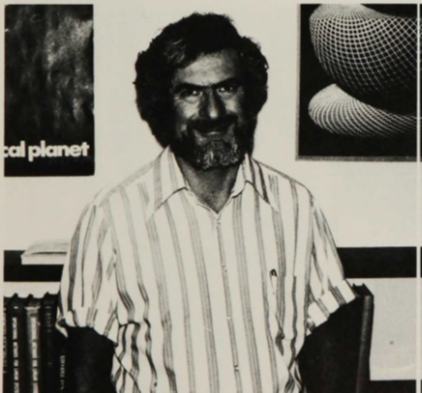
In 1976, Richard was on track to complete his computer science degree at Florida Tech. In the winter quarter, he enrolled in professor George Abdo’s** Numerical Analysis course.
Abdo, a distinguished mathematician, had joined the university in the 1960s. Students reveled in his antics and his passion for teaching.
In an early class session, Abdo showed the class video of a computer-generated vibrating membrane he had made at the University of Minnesota with funds provided by a National Science Foundation grant. Vibrating systems (eigenfunctions) were part of the course curriculum.
A few weeks later, Richard invited Abdo and Clutterham to come to Eau Gallie to see what he had done on the Adams IMP-16 computer. The pair of professors were amazed. Years later, Abdo documented the experience in a letter written in 2008:
“Richard’s demonstration was a single string vibrating from a triangular initial condition at one end of the string. Richard told me that his computer didn’t have enough memory to use a more complex initial condition such as a curve. Still the motion was apparent. Richard’s graphics display was novel since this was the first time I had seen or heard of a computer graphics output with a real time animated display of a vibrating system. The computer Richard demonstrated was also novel. It was obviously home brew. … Richard told me that I inspired him to configure the hardware and software to make this demonstration.”14
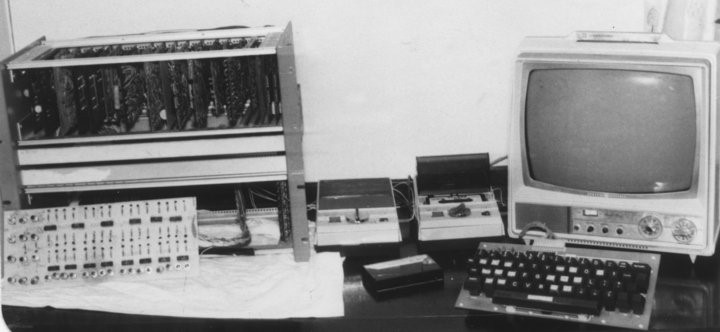
Dame Fortuna Smiles Again
Richard graduated in 1976. His innovative use of the IMP-16 garnered him a job with National Semiconductor.
Scott’s RCA connections led to a position with the telecommunications company Stromberg-Carlson Products Inc., working on a digital switch for telephones.
“One day in 1977, Adams and his wife, Alexis, discovered she had made a major cumulative error of several hundred dollars in their checking account,” according to a Miami Herald article. “So she used the windfall to buy Scott a Radio Shack microcomputer.”5
A year later, Scott’s colleagues scoffed when he told them he planned to develop a video game on the TRS-80.15
The inspiration came from William Crowther and Don Woods, who had written a program for a PDP-10 mainframe computer called Colossal Cave Adventure. In the next two weeks, Scott invented a new way of writing adventure-style games. He devised a new language along with a compiler and interpreter. He had created the first home interactive computer video game. He called it Adventureland. Within six months, he and Alexis had written a second game, Pirate Adventure.
In 1978, Scott formed a company called Adventure International. He would go on to write a dozen interactive “Adventures.”
“Adams is the Edgar Rice Burroughs, the H.G. Wells, the Bram Stoker of the micro-computer age’s newest form of literature: interactive fantasy,” journalist Stephen Doig observed.5
Scott offered a more modest description.
“Basically,” he observed, “I’m a novelist, and a computer is my medium. Unlike a regular novel which you read, a computer novel you interact with.”16
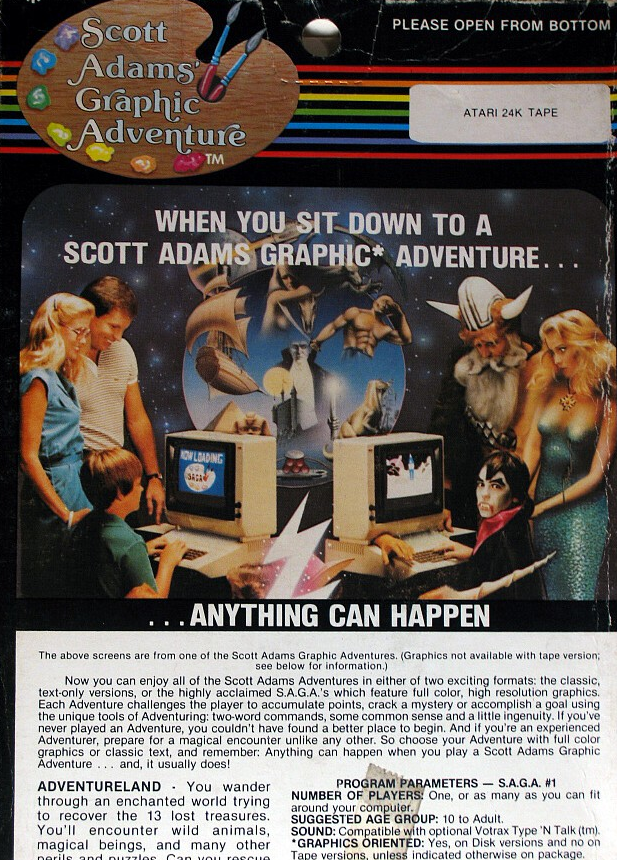
The Wheel Keeps on Turning
Our lady of perpetual permutations, Dame Fortuna, is ever-changing. Her smile can become a frown in a heartbeat.
Between 1978 and 1983, Adventure International became a $3 million-a-year business. Sixty freelance video “novelists” produced a host of interactive games. Marvel Comics offered the company an exclusive contract to create a series of video games.

The bubble burst in 1983. Supply was greater than demand. Sales plummeted, feast turned into famine and Adventure International went bankrupt.
Fast-forward 50 years, and the video game industry is booming.
In March 2021, Roblox, a gaming site aimed at children, went public. At the close of trading, the company’s value skyrocketed to $45 billion. Lines form at Best Buy and Walmart to purchase Xbox Series X, the Nintendo Switch OLED and PlayStation 5.
Games like Call of Duty, Counter-Strike and Escape From Tarkov have provided many with a diversion from the COVID-19 pandemic.
“The game industry’s swimming in cash,” Joost van Dreuen, a New York University professor who studies the business of video games, declared. “It’s just raining money on these people, on these companies.”17 (Browning, 2021)
Billions of computer game lovers owe a debt of gratitude to the creative genius of three Florida Tech graduates. Their adventure and their university’s adventure continue.
Ad Astra per Scientiam
Citations
*During his career at Florida Tech, Clutterham led the mathematics and computer science departments until retirement in 1989. In World War II, Clutterham was awarded a Silver Star Medal for his service on the USS Tinosa (SS 283) in the Sea of Japan. Clutterham, a quiet, modest man, rarely spoke of his wartime experiences. According to his son, Jack, “One evening, when they watched a movie depicting a fired torpedo that circled back to the ship, his father commented, ‘We had one of those.’”18
**Abdo retired in 2000. His rigorous teaching style was an inspiration for both his students and colleagues. He died in 2015. At the university’s memorial, both his brilliance and whimsy were remembered. It was noted that Abdo prided himself on his ability to drink an entire bottle of beer while standing on his head. This was a talent rare among academicians.
1Online Etymology Dictionary. (2021). Adventure | Etymology, origin and meaning of adventure by etymonline. Retrieved from https://www.etymonline.com/word/adventure
2Aggro Interview: Scott Adams. (2005). Retrieved from http://aggrome.blogspot.com/2005/11/aggro-interview-scott-adams.html
3Georgiev, D. (2021, December 17, 2021). How many people play video games [Video Game Statistics]. Retrieved from https://review42.com/resources/video-game-statistics/
4Adams Named to Deans List. (1972, April 27). Nassau County Record.
5Doig, S. (1982, October 22). Computer Adventurer Cashes In. Miami Herald, pp. 1B, 3B.
6Adams, S. (2021, November 12) Interview/Interviewer: G. Patterson.
7Fowler, S. (2002). Avis Part Eighteen – Curry or Stew! Retrieved from http://heritage.org.ac/avis18.htm
8Morton, E. (2014). Ascension Island: Home of Lava Fields, A False Forest, and the World’s Worst Golf Course. Atlas Obscura. Retrieved from http://www.slate.com/blogs/atlas_obscura/2014/09/19/ascension_island_in_st_helena_lava_fields_false_forest_world_s_worst_golf.html
9Darwin, C. (1987). Diary of the Voyage of H.M.S. Beagle: New York University Press.
10Moore, M. (1983, October). The Adventures of M. Scott Adams (so far). F.I.T. Update, 1(3), 1, 4.
11Richmond, L. (1974, November 11). Computer hums its own music. Eventing Times. Retrieved from http://www.exoticsciences.com/ra_scrpbk/musicx.htm
12Integrated MicroProcessor-16. (1973). In N. S. Corporation (Ed.). Santa Clara, California: National Semiconductor Corporation.
13Adams, R. (2010, 2008). The world’s first 16 bit home computer graphics game. Retrieved from http://www.exoticsciences.com/ra_music.htm
14Abdo, G. (2008). [Letter].
15Jerz, D. (2007). Collosal Cave Adventure. Digital Humanities Quarterly (DHQ), (1 & 2). Retrieved from http://www.digitalhumanities.org/dhq/vol/001/2/000009/000009.html
16Renner, L. (1983, March 10). Computer Novelist programs fantasies. Orlando Sentinel, pp. E1, E12.
17Browning, K. (2021, March 10). Roblox Tops $45 Billion on First Day of Trading as Gaming Booms. New York Times. Retrieved from https://www.nytimes.com/2021/03/10/technology/roblox-stock-price.html
18In Memoriam David R. Clutterham. (2009). Florida Tech Today, 18(2), 19.

